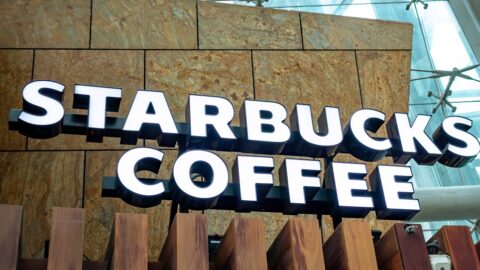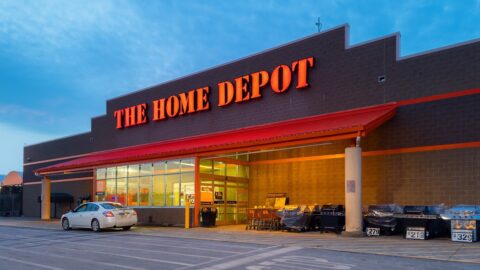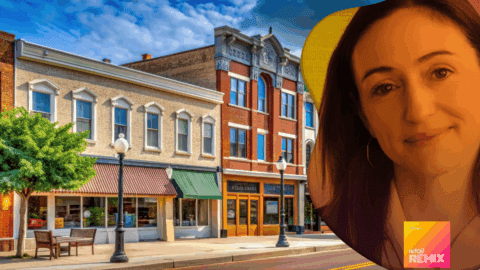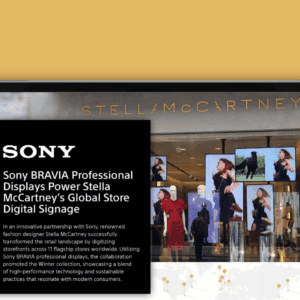For Rebekah Kondrat, retail is magic. “A great experience, like a physical retail environment, can change someone’s day,” she said in an interview with Retail TouchPoints. That’s why Kondrat and the entire team at Rekon Retail focus on creating this retail magic for consumers by helping growing brands develop the vision for their brick-and-mortar experiences.
With experience working for brands like Apple and Starbucks, both of which have carved unique spaces in the realm of store design and experience strategy, Kondrat found that the best spaces had a sound operational foundation, and that these operations, teams and processes were standardized across all locations as the businesses grew.
These brands answered key questions like, “How do we train a large team to give a consistent customer experience every time?” Kondrat said. “How do we think through how inventory is received so that we can get it to customers faster? I learned all those nuts and bolts, infrastructure and scalability, there.”
Kondrat was able to apply these learnings at Warby Parker, where she served as Flagship Store Leader. At the time, the now-booming eyewear brand only had three stores, so she was able to help “build something from the beginning.” She added: “To enter that environment, where you don’t have any standards or processes…you have to think critically about what’s best for this specific brand in its current place and in its journey.”
Kondrat took her experience at Warby Parker and went on to Outdoor Voices and furniture brand Joybird, and soon noted similarities in their operational challenges. These overarching trends were her nexus for starting Rekon Retail, which aims to serve brands in their early entry into brick-and-mortar as well as at the start of a significant store expansion. Moreover, the company serves as a “trusted partner,” with the operational expertise to support brands that aren’t ready to hire an in-house executive to lead stores.
Kondrat and Partner Libby Shani have developed a scalable four-step process that can help any brand develop a store operations strategy:
1. Audit your systems and structure.
Every organization is different. Of course, digitally native brands breaking into brick-and-mortar don’t typically have the personnel required to support effective store expansion. They also may not know what roles and skill sets to look for while hiring for these roles. Brands need to identify the gaps in their executive leadership teams and the skills they need to add to their workforce. During the audit process, brands also need to assess their current tech stack, from the point-of-sale systems they use to any store-specific tech like traffic counting systems.

2. Understand what drives your brand experience.
“It’s one thing to put branding on your website, have a color palette and recognizable logo that is very specific to the brand and the ethos comes out in that way,” Kondrat said. “When you move all of that into physical, it’s great to start there. But what do you want your customer to feel?”
This is the stage when brands move beyond basic brand ethos and into true experience strategy. Executives need to think not only about what they want customers to feel in-store, but also how all components of a store, including associates, can help produce those feelings. While the underlying goal is typically to drive commerce, there are many possible adjacent goals that lend themselves to different store experiences.
“Is the goal to better understand your customer?” Kondrat asked. “Is it to develop new products or convert a different type of customer?”
3. Identify what can scale.
As brands open more stores, they may seek formats and solutions that will allow them to open on-brand stores more quickly. Rekon Retail has helped several brands, including Olfactory, develop a kit of parts, which is a scalable fixture package and/or ordering sheet for components that allow them to “rinse and repeat” at least 80% of their build out.
But having scalable components doesn’t lead to cookie-cutter stores. Rather, having streamlined steps and components gives brand teams the time, budget and brainpower to focus on adding nuance and distinct elements to each location. For example, Olfactory has a speakeasy at the back of its Newbury St. location in Boston.
“There is streamlining and ultimately a cost savings and a time savings that comes with this kit of parts,” Kondrat explained. In addition, Olfactory had core brand components and a great product. As a result, Rekon Retail helped the brand find the right creative partners to bring in to replicate the success of other stores and elevate the experience even further, to “help the customer in a brand-new market where they’ve never opened,” she added.

4. Prototype and evolve.
As brands grow and evolve, their in-store experiences should too. That’s why Kondrat and her team are big proponents of prototyping and iterating everything, from store fixtures to how inventory is stored and even the visual elements included in each location.
For example, Rekon Retail has helped M.M.LaFleur adapt its in-store experience as it has gone from temporary pop-ups to new permanent openings. Rekon Retail helped the brand assess the customer journey and backend operations to ensure they aligned with leadership expectations. “All of those invisible things that make the store run and make the customer experience magical are the things that we have worked with them on,” Kondrat said.
Rekon Retail also helped M.M.LaFleur turn its signature yellow pop of color into a central brand mural in certain stores — something that can be used and iterated upon by local artists to show how the brand integrates into different city cultures and communities.













